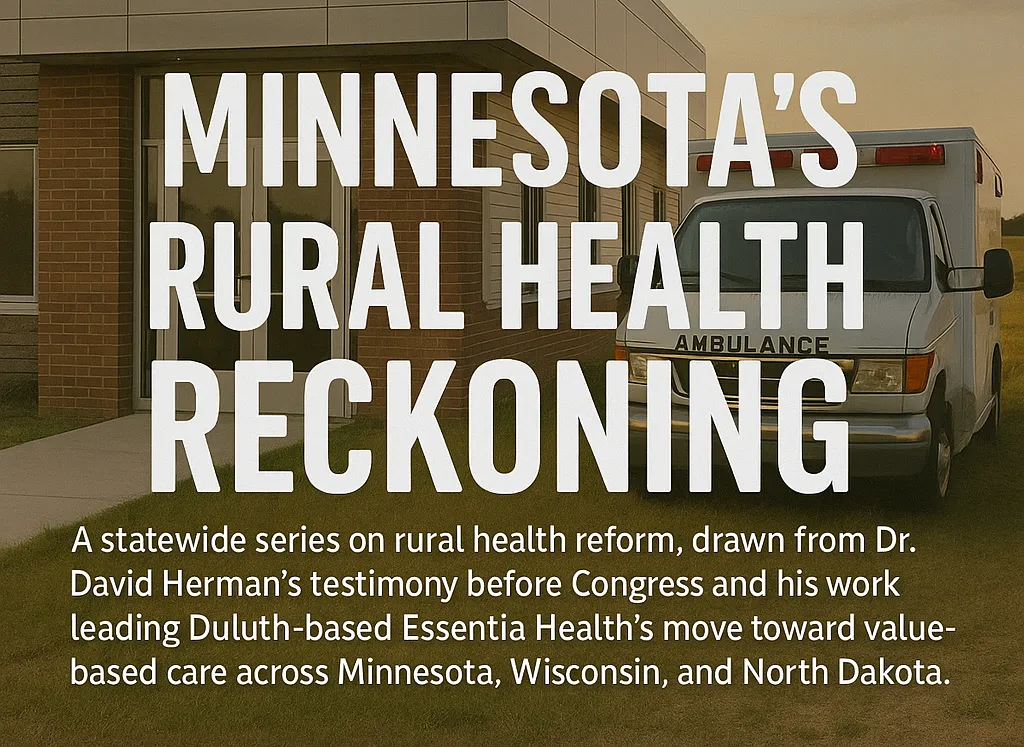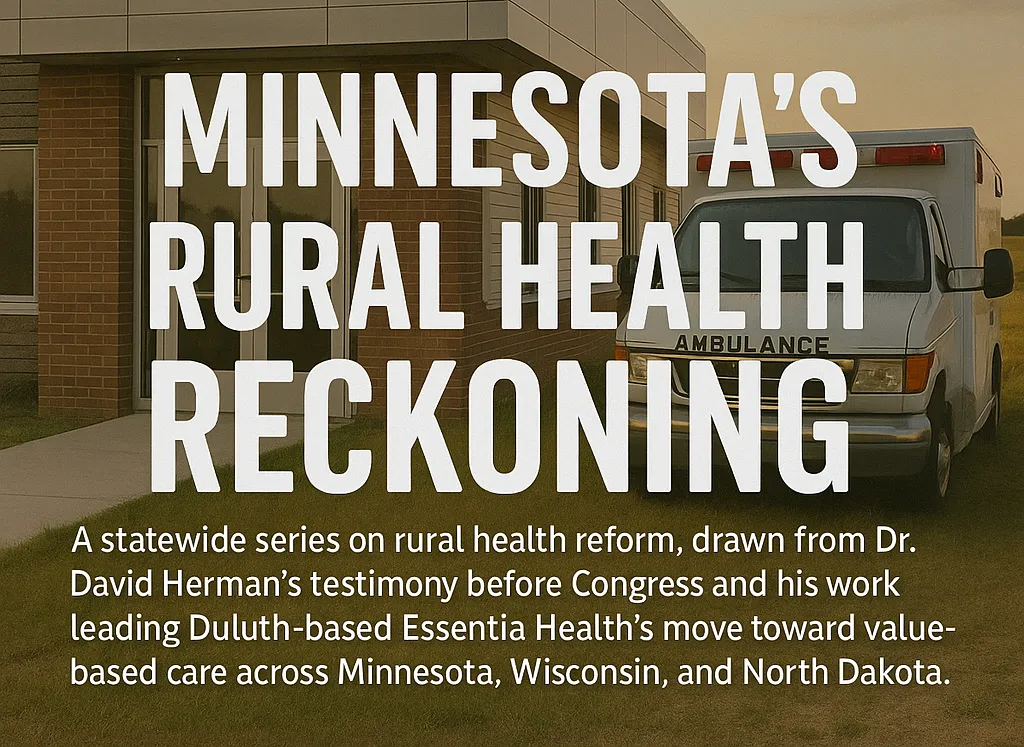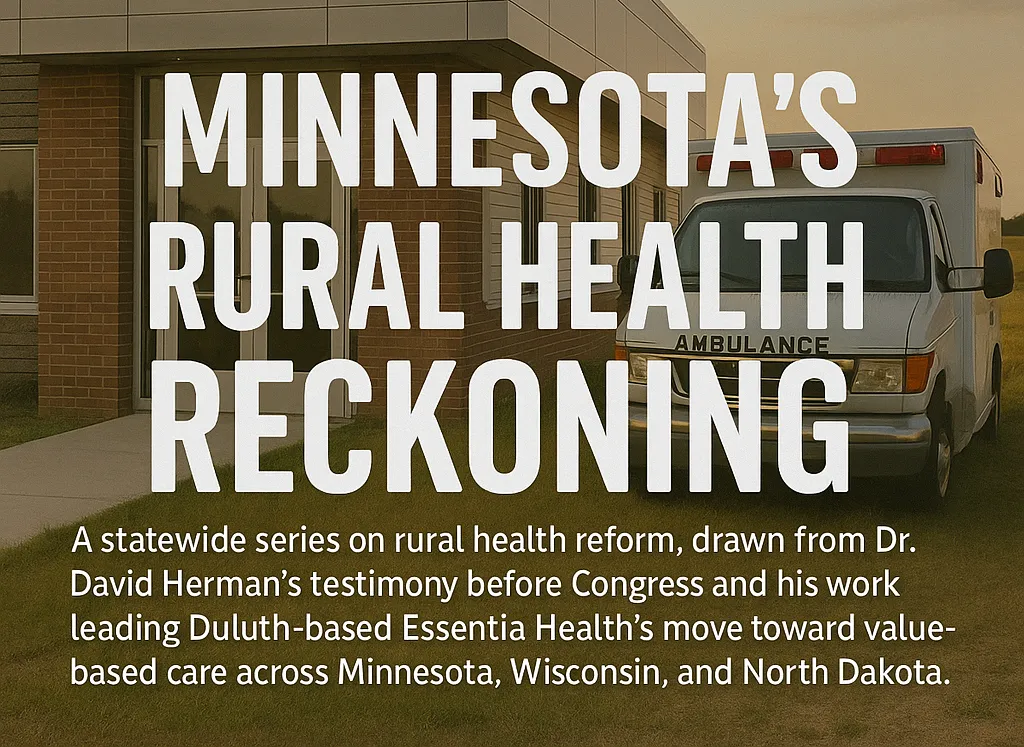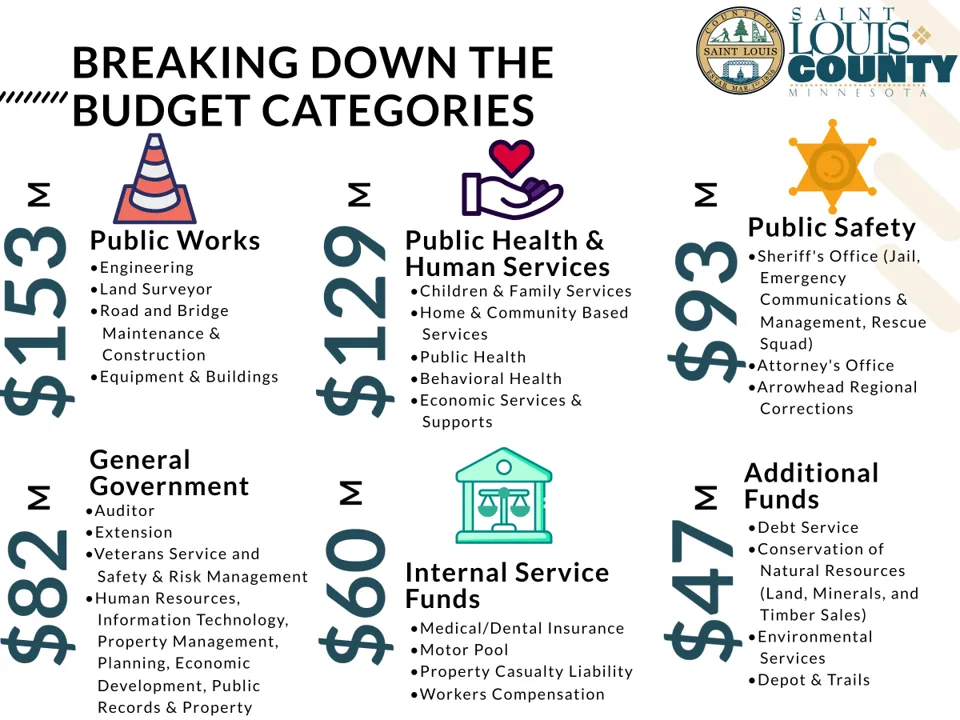Final column in the series “Minnesota’s Rural Health Reckoning”
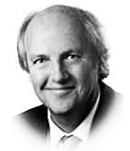
Howie's column is powered by Lyric Kitchen · Bar
When Dr. David Herman testified before Congress, he did more than represent Essentia Health.
He brought Washington a message from the northern edge of the country — from a place that still believes health care should stay close to home. It was a gift, quietly given and too easily missed: a real-world blueprint for how to fix what America keeps talking about fixing.
Over the past twelve columns, we’ve watched that blueprint take shape — piece by piece, policy by policy, person by person. We’ve seen the broadband cables stretch across frozen fields (“Broadband is the new stethoscope,” Herman said).
We’ve seen hospitals reclaim their role as civic engines instead of cost centers. We’ve seen pharmacists, social workers, and nurses become the connective tissue that bureaucracy forgot.
Minnesota's Rural Health Reckoning was an ongoing statewide series examining the future of rural health care in Minnesota through the lens of Dr. Herman, chief executive of Duluth-based Essentia Health.
Drawing on Herman’s testimony before the U.S. Senate Finance Committee, the series explored how Minnesota’s hospitals are rewriting the national playbook for sustainable, patient-centered care.
Each installment traced a different reform now shaping life across the 218 — from broadband access and drug-pricing battles to the human realities of workforce burnout and small-town survival.
No organization sponsored the reporting. No PR firm pitched it. It’s one veteran columnist watching Minnesota’s health-care revolution unfold from the inside out — and trying to make sense of what it means for all of us.
Each column in the series held a fragment of truth:
In “The Broadband Health Gap,” we met patients whose lifeline depended on a signal strong enough to cross snow, forest, and distance. Telehealth wasn’t convenience – it was survival. Herman’s insistence that technology belongs to the patient, not the provider, changed the conversation: broadband as health infrastructure.
In “Inside Rural Minnesota’s 96-Hour Trap,” we exposed a regulation that turned care into clock-watching. A hospital forced to discharge after four days, even when the next specialist is two counties away, isn’t serving the patient — it’s serving paperwork. Herman called it what it is: a barrier disguised as a rule.
“The 340B Lifeline Under Attack” reminded us that policy can either empower or erase communities. The federal program keeping small-town pharmacies afloat has become an annual target in budget fights, but Herman’s calm defense of it — walking senators through the real-world numbers — cut through the noise. “This is what keeps the light on in the pharmacy window,” he told them. “That light tells you if a town is still alive.”
“From Fee for Service to Fee for Results” carried that idea further. For once, the revolution wasn’t coming from Silicon Valley or D.C., but from Duluth. Essentia’s contracts now reward prevention, not procedures — and those incentives are saving both lives and budgets. In a state famous for innovation, this may be the most transformative export yet.
“Food, Heat and Hope” pulled back the curtain on what health care actually means in northern Minnesota. “Access to healthy food, transportation, and housing must be seen as part of health care,” Herman told the Senate. In one line, he collapsed decades of policy debate into a single truth: medicine doesn’t start at the clinic door; it starts at the kitchen table.
“The Color of Rural Health” gave voice to partnerships with Tribal leaders like Samuel Moose, proving that equity isn’t charity — it’s design. Essentia didn’t impose its model on Indigenous communities; it built shared governance. The result: measurable outcomes and mutual respect.
“When Hospitals Become Economic Engines” showed what happens when a health system invests in place. The new St. Mary’s Medical Center, gleaming above downtown Duluth, isn’t just a building. It’s a statement — that rural cities can lead, that medicine can anchor a downtown revival, that the best future for health care might also be the best future for Main Street.
“The Doctor Will Text You Now” brought that vision home. In an era when half of rural counties still lack adequate broadband, Essentia built a system where care follows the patient. “At the core of patient-centered care is connection via the EHR,” Herman said. It’s that connection — not technology for its own sake — that defines the new rural medicine.
“Unburdening the Healers” captured the cultural shift. Doctors who once felt trapped in digital paperwork are now freed by shared teams. “Implementing value-based care enhances the care clinicians can provide,” Herman said. That’s not management-speak; it’s what redemption sounds like in health care.
“Policy from the North” put it all together: extend the 5 percent bonus for risk-bearing providers, protect 340B, make telehealth permanent, align Medicare Advantage with real outcomes. Simple, concrete, achievable steps — and all tested here first.
And throughout, in “The Next Great Minnesota Export” and “How Minnesota Is Quietly Rewriting the Rules of Rural Health Care,” one theme emerged: what’s happening in Duluth isn’t local luck; it’s national leadership. Herman and Essentia have built a living case study for a country desperate for one.
This wasn’t a story of survival — it was a story of renewal. In twelve dispatches, we’ve seen the north woods become a classroom. We’ve watched a health system rooted in modesty prove that innovation doesn’t need spectacle.
When I began this series, I thought I was documenting a transformation. I now realize I was chronicling something more fundamental: a restoration of trust. People in small towns and remote zip codes aren’t statistics — they’re proof that good health care can still live where the snow piles high and the hospitals sit miles apart.
Keeping health care close to home isn’t nostalgia. It’s necessity. And if we lose it, we lose something far greater than convenience — we lose belonging.
That’s why Essentia’s message to Congress mattered. It wasn’t a plea for funding; it was a reminder that the nation’s conscience still beats strongest far from its capital. The policies may need tweaking, but the principle stands: health care must never drift too far from the people it serves.
From broadband to team-based care, from equity to empathy, from policy to practice — this series was a journey through a system finding its soul again.
I wasn’t in Washington when Dr. Herman spoke. But I’ve been here, watching the ripple spread — across small towns, across state lines, across a country that’s forgotten how much wisdom can live in a place like Duluth.
If the nation is wise enough to listen north, it will find the answers waiting. Because up here, health care isn’t just a profession. It’s a promise. And we keep our promises close to home.


